7 First-Sentence Shifts to Thaw Cold Email Outreach
A cold email doesn’t have to be cold any more than a first handshake or fist bump. It’s really all in the approach–and in the intention. If you’re trying to sell something, that will inevitably come across.
The best way to sell something is to help someone with what you know, create, or do.
It can be a leap of faith, but there’s really no way to miss when you serve other people. At the very least, you make friends.
So, when you write your cold email, think: “how can I serve you with what I have here?”
With that approach, every cold email is warm as the day is long.
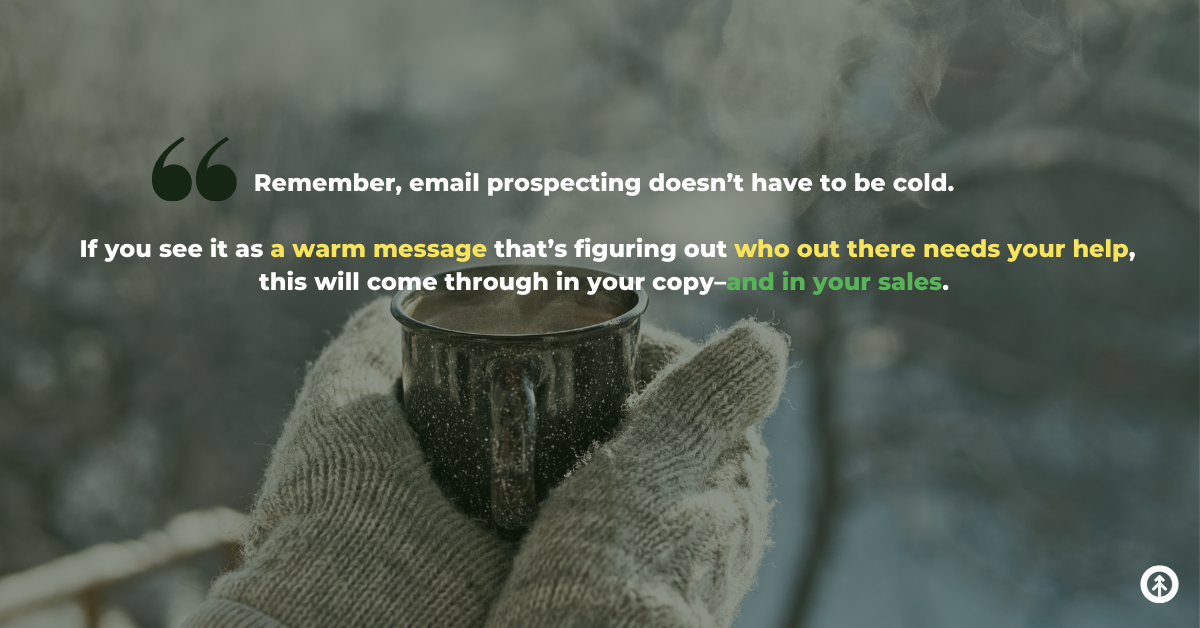
A first sentence is a first impression and sets the tone for the rest of your email, and a good way to catch your salesy, cold email is to notice how many of them begin with sentences like these and fix them.
- Hi! My Name Is…
- I work for…
- Did You Know…
- Congrats on…
- I’ve been thinking…
- I hope you’re doing well…
- Did You find what you were looking for?
Here are 7 revamps of first sentences to thaw out your cold outreach.
“Hi! My name is…”
Think about it, you only really remember someone’s name when you know something about them that’s worth remembering. In a first email, all you’ve got is a font.
Instead: Write the email, and begin with the second sentence. For example, “I love your brand and its playful voice. Sometimes, we love things because they mirror what we can do ourselves. I’m a writer, are you looking for more of us?”
Okay then. Now you’ve got an email.
“I work for…”
Unless you work for a well-known business that everyone on the planet knows (i.e. Amazon, Google, etc.), mentioning it in the first sentence won’t change how much attention you get with your email.
On top of that, it’s the first tip-off that you’re trying to sell them something. So, unless there’s a specific reason to mention what organization you work for (a previous conversation that needs a memory-jog, etc.), it’s best to leave it off.
Instead: Remember, this is a cold email. A first touch. A first impression. Weave your organization into the email naturally by quickly offering something that your company does that might help THEM.
“I noticed that your team is growing fast. That’s awesome! From our team to yours: Congratulations! The Growth team actually helps smaller companies that have grown into the mid-market and enterprise-level to make sure they have all the HubSpot they need to grow even better.
Here’s a recent article on it from our blog. If you need more information or assistance, we’re right here.
Best, Will.”
“Did You Know…”
Dropping random statistics on your cold email recipients is like dropping ice in your iced coffee to warm it up.
Said no one, never: “Let me call this sales rep immediately for giving me that random information about email open rates!”
But, that doesn’t mean statistics are useless in cold email. Quite the contrary. You just have to make it relevant to what your recipient needs.
For example: If you received an email that started with “According to the research firm, Gartner, only 23% of B2B buyers say their most recent purchase was easy,” what would that inspire you to do? Probably nothing.
Instead: try it this way (relevance + value in all things, friends). “If you think being in the business of helping other businesses succeed is hard, apparently, it’s just as hard to be on the other end of it. 23% of B2B buyers have a hard time paying for services, and those that make it easy, win that business. We’ve got a solution: HubSpot Payments! It links right onto proposals, email, and invoices to make things easier than ever.”
Now that’s a powerful, relevant statistic that’s valuable to your recipient.
“Congrats on…”
Congratulations are perfect opportunities to reach out with something your business can do to help. Congrats usually mean change, after all, and people going through change (even if it’s good) need all hands on deck.
But, starting with “congratulations on…” is #1 lazy, and #2 a tip-off that yours is a form letter.
Instead: get incredibly specific. Instead of “Congratulations on getting funded.” You could say: “I read today in COCA’s Newsletter that Blue Gears received a $1.2M grant from the National Endowment for the Arts. That’s BIG! Congratulations! If you need help keeping track of all the submissions you’ll soon be receiving, that’s what HubSpot does, and our team can show you exactly how to set it up specifically for Blue Gears. If you need that, we’re right here.”
Now THAT is a congratulation people love to get.
“I’ve been thinking … ”
.png?width=1200&name=you-statements-cold-email-growth-marketing-firm%20(1200%20%C3%97%20628%20px).png)
Let’s be honest here, your prospects don’t care what you’re thinking yet. It’s kind of your job to inspire them to do so, but the first thing you have to do is help them. Otherwise, you shouldn’t really be in their inbox at all.
Think about how it sounds when you say to a stranger: “I’ve been thinking about your wardrobe.” Um.
Most people’s response?
“Step off, sir.”
Instead: invert the statement. “Your wardrobe has me thinking…” Now THAT has your ears perked up, right?! The news could be bad, but you still want to hear it because it could also be FANTASTIC.
Syntax like this is everything. It reveals a “YOU FIRST” mentality. And that’s a service mentality that opens the hearts and minds of your audience.
Bonus: Use “you” statements more than “I” statements in your writing, in your speaking, in your intentions, and you become the type of person people love to do business with over the long haul.
"I hope you're doing well... "
Ooof.
Yes, it’s kind. Yes, this is not in any way offensive to anyone. Except, it’s entirely bland.
It’s a sentence all of us were taught to write in a letter right off the bat whether we meant it or not. It is entirely devoid of creativity, authenticity, or genuine engagement. One thing is guaranteed: your prospect won’t make it to all the insights, assistance, and information you so lovingly put elsewhere in your email.
Instead: jump into your insight, assistance, or information right off the bat. This gives you that much more of a chance of grabbing the attention of your buyers.
Don’t be afraid to address a tough issue immediately. If your business helps other businesses stay afloat as ours does, just say that.
From the last tip: “[Business X]’s recent vacancies in its marketing department has me thinking. Growth’s team is here to fill in gaps just like yours until you can fill them again. If you need us, we’re right here.”
Addressing the issue head-on can add a lot of value and even save a business.
"Did you find what you were looking for?"
This sentiment, if it shows up right after your prospect has downloaded your ebook, filled out a form, or read your blog, shows up at exactly the right time: when a buyer is interested in hearing from sales.
The problem with it is that it’s vague, confusing, and no great sale ever came out of a yes/no question.
Instead: be specific about which opportunity or pain point you’re referring to. Truth is, they might have found quite a few things they were looking for.
Here are some open-ended, direct questions that are easier to answer:
- "Which of the services on our services page would your business need the most?"
- “What questions do you have about the feedback our website grader gave you?”
- “Which pricing level on our website fits your budget best?”
If you get granular, it’s easier to start a productive conversation.
Remember, email prospecting doesn’t have to be cold. If you see it as a warm message that’s figuring out who out there needs your help, this will come through in your copy–and in your sales.
At Growth, everything we do is done in a spirit of service. Are we experts? YES. Are we running a business, yes. Are we successful? Yes! Do we help people who need us? Yes, yes, and YES.
Wanna come, too? Now and forever, onboarding happy clients. Grab your ticket.
Explore More Insights: Related Blog Posts
-
 Inbound MarketingNov 17, 2020
Inbound MarketingNov 17, 2020 Growth Marketing Firm
Growth Marketing Firm5 Signs That Your Business Needs to Hire a Growth Agency
It’s simple. You want results, but you’re not seeing them. That is the most direct and honest reason to hire...
-
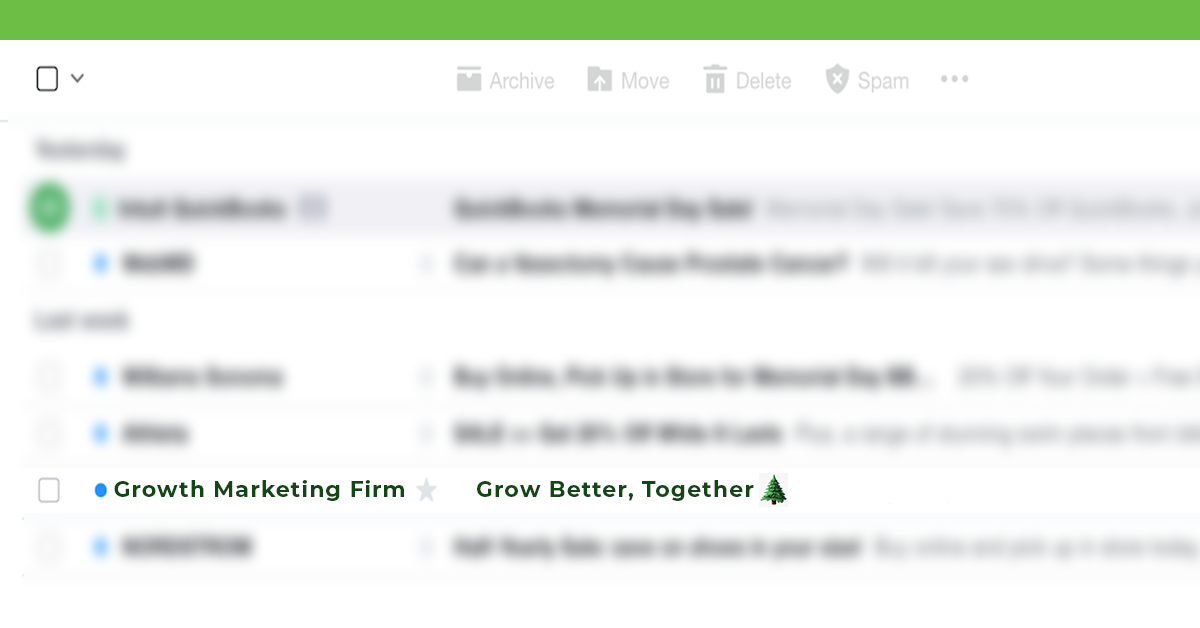 Inbound MarketingJul 9, 2020
Inbound MarketingJul 9, 2020 Ashley Lilly
Ashley LillyThe Power of Email Marketing
Last updated January 21, 2021 You want your marketing dollars to generate qualified leads and engage current...
-
 Sales EnablementNov 24, 2021
Sales EnablementNov 24, 2021 Growth Marketing Firm
Growth Marketing FirmBuilding Custom Reports in HubSpot
(Updated January 21, 2022) For anyone who’s unfamiliar with HubSpot and what it can do for your business: how...
-
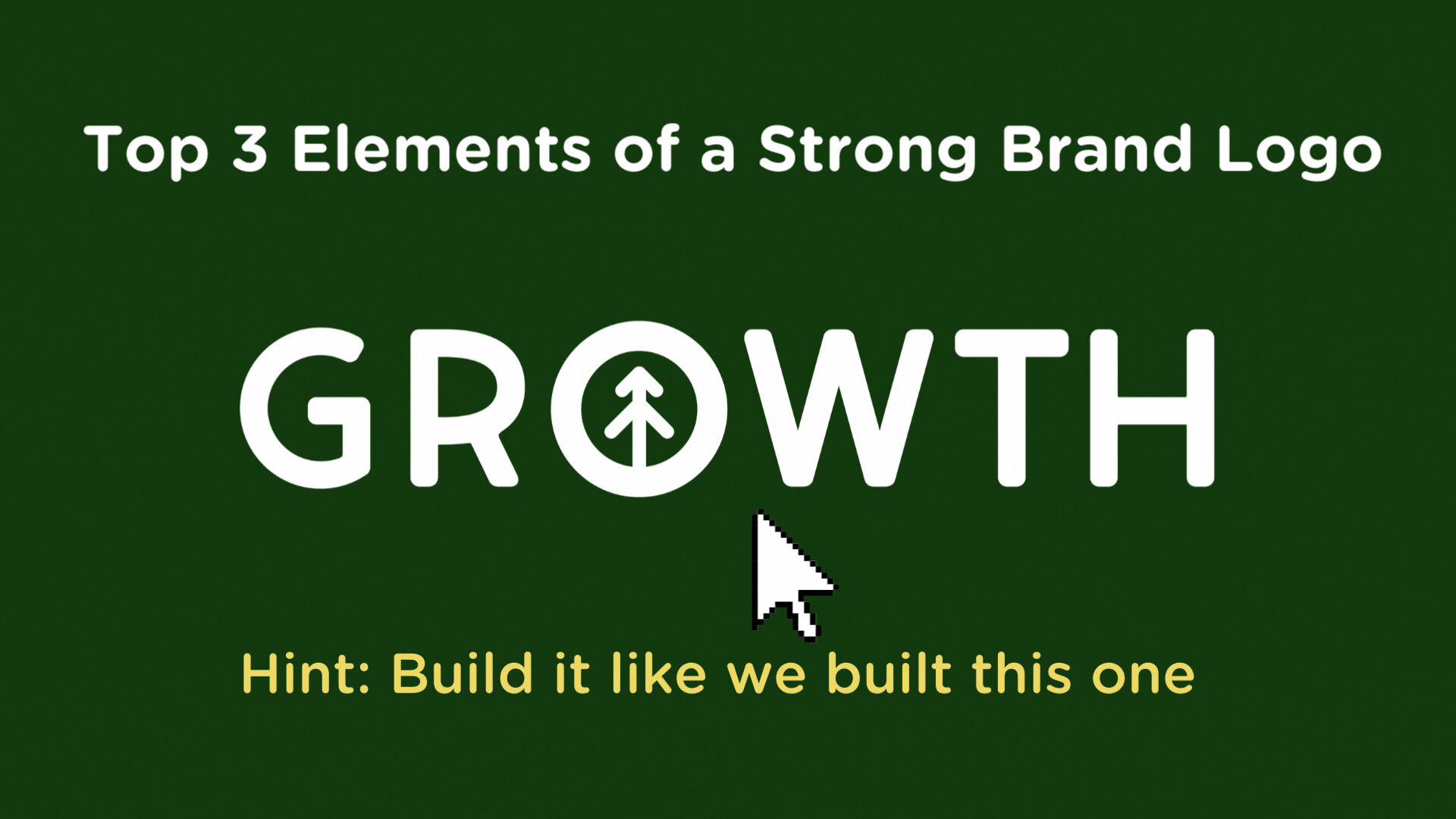 Website DesignFeb 20, 2023
Website DesignFeb 20, 2023 Growth Marketing Firm
Growth Marketing Firm3 Key Elements of a Strong Brand Logo
Your logo is one of the first things a customer sees when they come into contact with your business, and its...
-
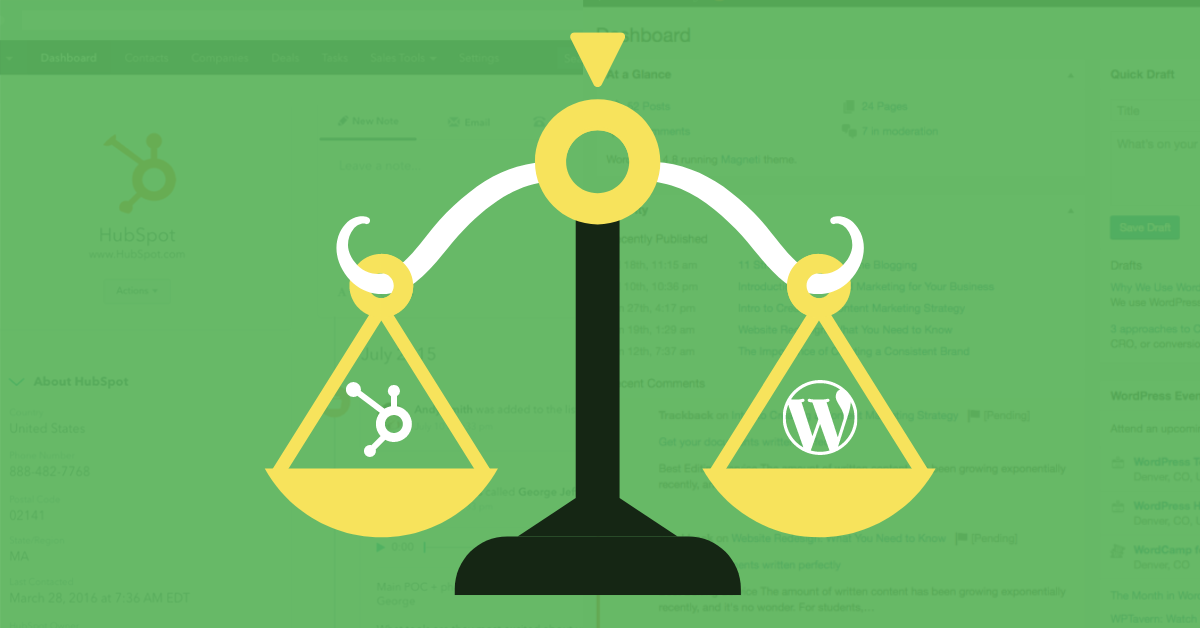 Website DevelopmentApr 20, 2021
Website DevelopmentApr 20, 2021 Ashley Lilly
Ashley LillyHubSpot vs WordPress: Choosing the Right CMS
(last updated November 15, 2022) If you're thinking about launching or rebuilding your website, you're facing...
-
 Inbound MarketingNov 5, 2021
Inbound MarketingNov 5, 2021 Growth Marketing Firm
Growth Marketing Firm6 Ways to Optimize Your Landing Pages
If your website offers a resource for free (like an ebook, a tool, or a newsletter) in exchange for a...
-
 Sales EnablementMar 20, 2020
Sales EnablementMar 20, 2020 Growth Marketing Firm
Growth Marketing FirmResponding to Coronavirus: A Playbook for Proactive Marketing
These are certainly unusual times with the coronavirus outbreak dominating the news cycle and after hearing a...
-
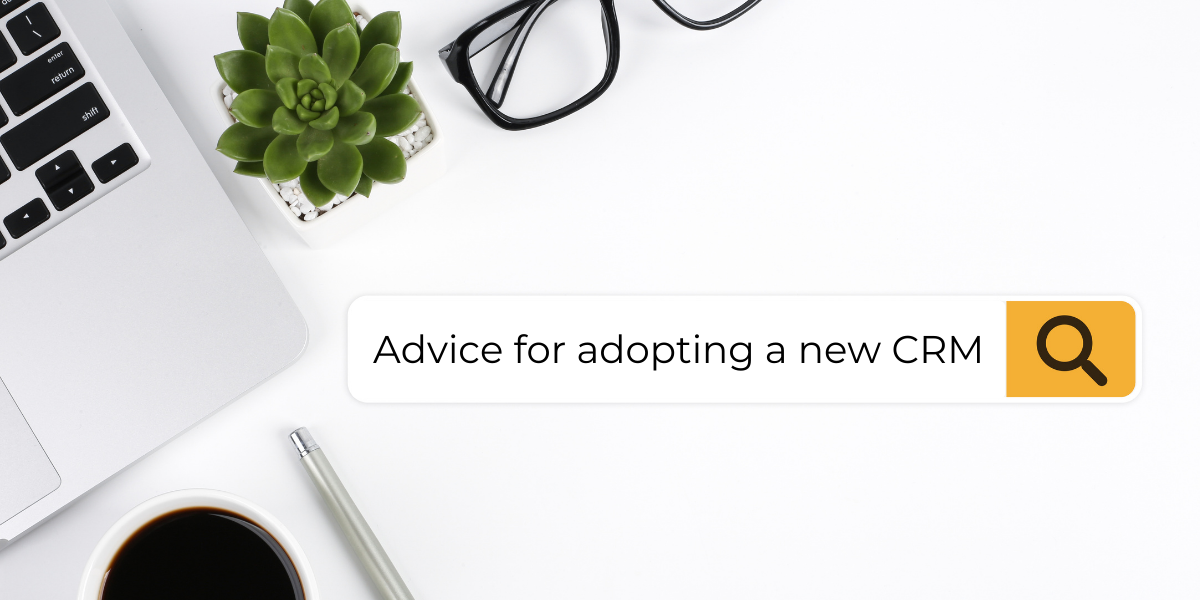 CRMApr 30, 2021
CRMApr 30, 2021 Katrina Horne
Katrina Horne5 Tips for Adopting New CRM Software Successfully
Did you know that 2 out of 3 CRM projects fail due to slow user adoption? In the same study, 38% of...
-
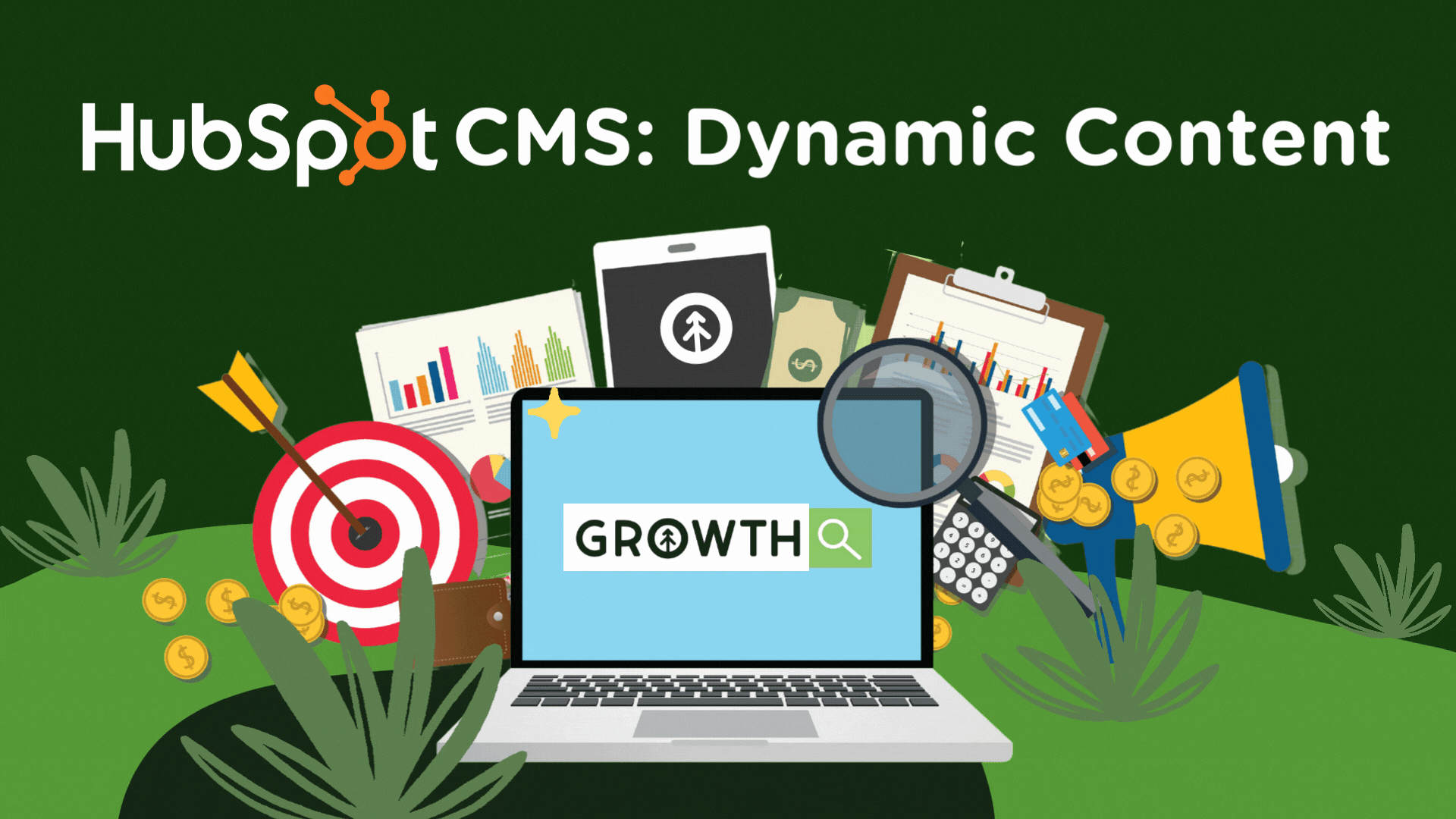 Inbound MarketingMar 9, 2023
Inbound MarketingMar 9, 2023 Growth Marketing Firm
Growth Marketing FirmHubSpot CMS: Dynamic Content for Personalized Website Experiences
Providing a personalized website experience for customers and visitors has become a crucial aspect of...

